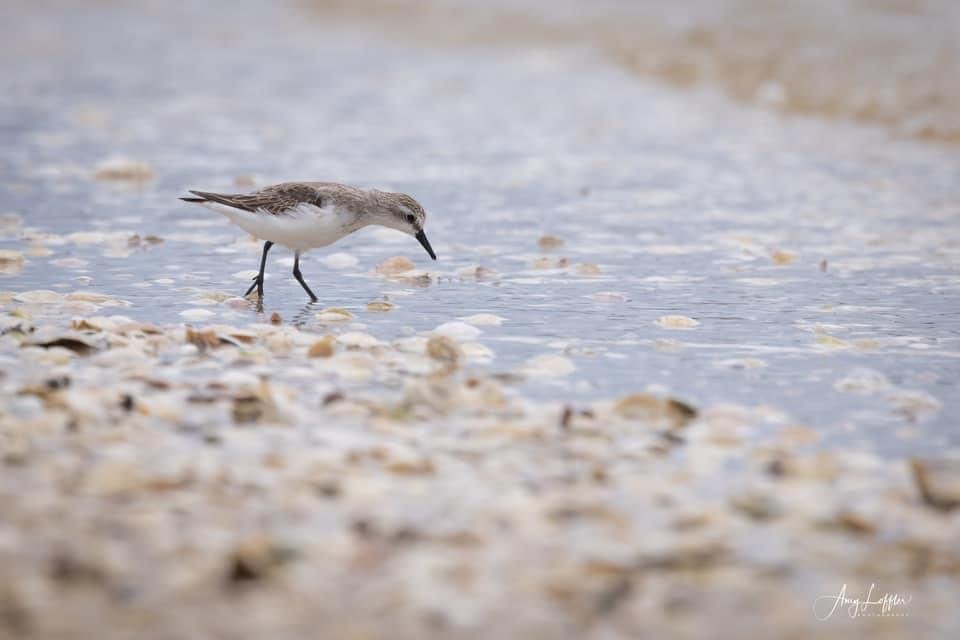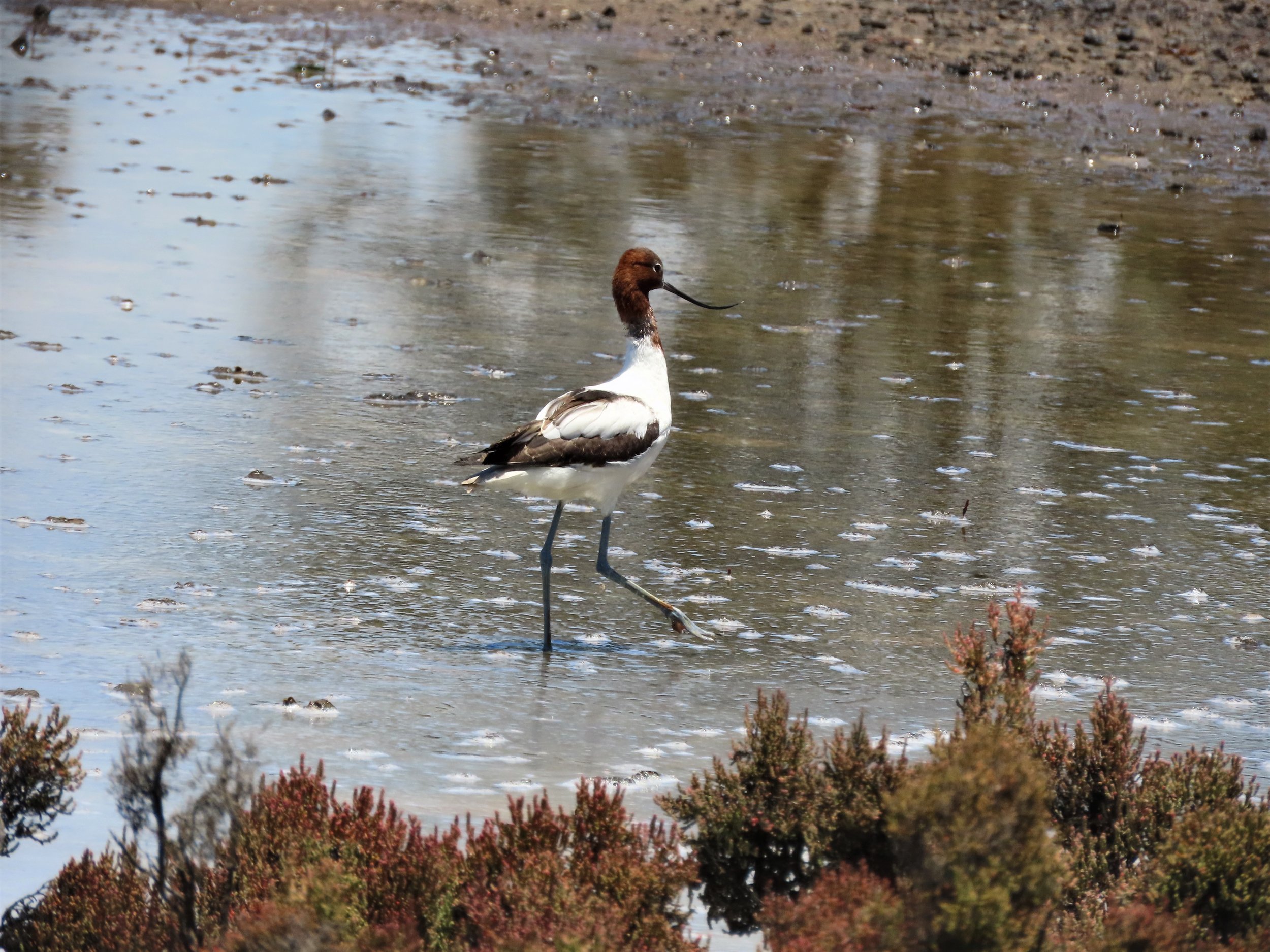
The Melville Bird Sanctuary’s Residents and Migrants
Red-necked Stint by Amy Loffler
The Melville Bird Sanctuary consists of two distinct regions.
East Region: Alfred Cove A-Class Nature Reserve, Attadale Alfred Cove foreshore & Swan Estuary Marine Park mudflats. Home to 131 species of birds.
West Region: Pt Walter Spit, Blackwall Reach Reserve & Blackwall Reach Parade, up to but not including the Bicton Jetty. Home to 81 species of birds.
The source for the bird lists of Alfred Cove and Point Walter is eBird (compiled by Drew Davison).
For descriptions of MBS birdlife as Marine and Coastal Birds, Freshwater Birds and Land Birds, we have referred to The Australian Bird Guide Revised Edition (CSIRO Publishing), The Compact Australia Bird Guide (CSIRO Publishing) and Birds of Western Australia (The Field Guide) by Simon J Nevill.
Both regions are home to:
Marine & Coastal waterbirds such as Pelicans, Terns, Cormorants, Stilts as well as all Trans-equatorial Migratory Birds
Freshwater Birds such as Black Swans, Ducks, Herons, Egrets, Rails, Crakes
Land birds such as Ospreys, Pardalotes, Tawny Frogmouths, Rainbow Bee-eaters, Honeyeaters
The most internationally significant birds that visit the Melville Bird Sanctuary are the trans-equatorial migratory birds. Each year these migratory birds fly to Australia in spring (October) to escape freezing conditions in their northern hemisphere breeding grounds. They return to the northern hemisphere in April to breed. Their spectacular journey from Siberia, Alaska, Eurasia and North Asia within the Arctic Circle is an amazing feat of navigation and endurance. Some of these birds such as the Bar-tailed Godwit travel as much as 13,560 kms in one single trip along the East Asian Australasian Flyway. Unfortunately, a few of these birds such as the Eastern Curlew and the Great Knot are listed as ‘critically endangered’. Australia has signed international agreements with Japan, China and the Republic of Korea to protect migratory birds and their habitats.
Migratory birds including waders such as plovers, sandpipers, knots, stints and curlews are significant visitors to the Melville Bird Sanctuary. They feed on the mudflats, probing for crustaceans, molluscs and worms. The shape of a wader’s beak can indicate how the bird feeds and what it eats.
The smallest of the waders are the Red-necked Stints which use their small, straight bills to jab the shallow mud for worms, snails etc. Curlew Sandpipers have slightly downcurved beaks which enable them to probe deeper into the mud for small crabs and worms. The Eastern Curlew with its improbably long, strongly downcurved beak feeds on large prey.
Migratory birds must build up energy reserves while in Australia to continue their migratory flight. Many are only able to feed for a few hours a day when the tide is out. Add to that the human disturbance of activities such as fishing on the mudflats and predation by dogs, cats and foxes and their chances of survival are greatly lessened. It is particularly important to minimise disturbance to migratory birds, giving them the best opportunity to feed and rest before they undertake the long return journey back to Northern Hemisphere.
Meet the Birds of MBS
No matter the season or time of day, there’s never a shortage of diverse and wonderful birdlife at the Melville Bird Sanctuary. From migratory visitors and rare sightings to a cast of characters that call our Sanctuary home year-round, the landscape and its occupants make each visit unique.
Both East and West regions play host to a range of Marine and Coastal birds including trans-equatorial migratory birds, Pied Oystercatchers and Pelicans, Freshwater Birds including Musk Ducks, Buff-banded Rails and Egrets and Land birds including Ospreys, Rainbow Bee-eaters and Tawny Frogmouths. Both regions provide some of the best scenic vantage points around.
The mudflats of the East Region which can be viewed from the Troy Park foreshore, regularly attract large flocks of shorebirds. Set against an uninterrupted backdrop of Perth’s city skyline, these present dazzling displays. Flocks include Cormorants, Pelicans, Caspian Terns, Fairy Terns, Pied Oystercatchers, Pied Stilts, Herons, and of course in season (October-April) migratory Bar-tailed Godwits, Grey Plovers, Red Knots, Curlew Sandpipers and more.
The Pt Walter Spit of the West Region similarly commands healthy numbers of shorebirds and is unique. The little island at the end of the Spit is also favoured as a breeding ground for Australian Fairy Terns, Red-capped Plovers and Pied Oystercatchers. Tearing yourself away from the Spit for a walk through Blackwall Reach Reserve may seem hard but you’ll be rewarded by stunning views of the river, dolphins and of course those limestone cliffs.
Photos of some of the birds of the Alfred Cove - East Region and Pt Walter - West Region are displayed below, each with a short description.
Thanks to photographers including Melissa Zappelli, Gareth Evans, Amy Loffler, Sue Stanley, Sue Harper, Lesley Hartmann and Jenny Christenson for allowing the use of their photos.
Click on individual images below to enlarge.
Marine & Coastal Birds
Fresh Water Birds
Land Birds
Australian Fairy Terns
The Australian Fairy Tern, while not a true migrant, visits the MBS each year between October and March. The MBS is an important feeding and breeding area for the species. The Australian Fairy Tern is listed as Vulnerable under the state Biodiversity Conservation Act 2016 and the federal Environment Protection and Biodiversity Conservation Act 1999.
This beach-nesting seabird breeds above the high watermark at the end of the Point Walter sandbar. Each year, a temporary fence is installed by the Department of Parks and Wildlife around October to reduce human disturbance of the breeding colony. Fairy Tern nests consist of a shallow scrape in the sand, and adults often add shell material around the nest to increase the camouflage of eggs and chicks. Breeding pairs typically lay one or two eggs, which are incubated for around 21 days. Chicks are capable of short flights from 22 days of age. Up to 250 nests have been recorded at Point Walter. Post-breeding, Australian Fairy Terns return to the Houtman Abrolhos for the autumn and winter months.
Images by Claire Greenwell
The provision of true safety for birds of the Melville Bird Sanctuary is about minimising disturbance.
Addressing the predation faced by birdlife from dogs, cats and foxes as well as disturbance from humans is paramount; as is providing essential habitat for them.
What We Seek for Our Birds
For these birds, critical to their ongoing presence throughout the Melville Bird Sanctuary is to protect them from disturbance during their breeding seasons.
For local waterbirds and wading birds, some nest on the shoreline and others in the samphire and sedges while others nest in old growth trees. Protection from disturbance will always rely on:
Protecting and strengthening the native vegetation throughout the buffer zone
Temporary fencing to sections of the shoreline such as the end of Point Walter Spit during the nesting season
Maintenance of the fencing around the samphire and sedge areas
Managing people movement with carefully placed walkways/pathways and viewing platforms
The total exclusion of dogs
Signage to educate and interest people
Where vegetation is being restored, temporary fencing will be needed
1. Local Birds and Nomadic Birds
These birds from the Northern Hemisphere visit the Melville Bird Sanctuary during October to March. They are reliant on being able to feed on the mudflats and shorelines during low tides and to rest on the shoreline and in the samphire during the night throughout the summer months, so as to put on sufficient body weight to be able to return to the Arctic to breed there.
It is critical to reduce human and animal disturbance to them, with:
Signage explaining the birds’ needs and how they are protected by international agreements (Japanese-Australia Migratory Bird Agreement, China-Australia Migratory Bird Agreement, Republic of Korea-Australia Migratory Bird Agreement)
Minimising disturbance with carefully placed viewing facilities
Preventing human disturbance and animal predation on the mudflats
Increasing Ranger presence to educate and minimise disturbances from humans and animals
2. Trans-equatorial Migratory Birds
3. Bush Birds
These birds are reliant on finding sufficient food, thus requiring healthy native vegetation and the presence of old growth trees for nesting hollows, insect life and nectar, and in the case of Rainbow Bee-eaters, loose sandy areas within the native vegetation areas. It is necessary to:
Restore undergrowth around existing trees to improve soil biota and tree health
Remove weed species, especially running grasses from vegetated areas
Exclude grasses from revegetated areas with minimum 1.5m hard surface borders such as pathways
Manage people movement with walkways/pathways as well as viewing facilities
eg. Honeyeaters, Frogmouths, Pardalotes
Birdlife Australia offers practical information including precautions you should take to make any rescue effort safe for both yourself and the bird. See link below:
What to do if you encounter an injured bird?
Bird-Friendly Rodent Control
The most commonly used rodent poisons are anticoagulant rodenticides (ARs). These act as blood thinners, so rats and mice can consume a lethal dose but not feel sick until later. Newer ARs called second generation anticoagulant rodenticides (SGARs) are powerful enough that a single feed can be lethal. But because of the time lag between taking a bait and feeling its effects, rodents can consume a more-than-lethal dose and still be wandering around – like walking time bombs. Predators that naturally eat rodents, like owls and birds of prey, can easily consume multiple poisoned rodents, in turn becoming poisoned themselves. SGARs don’t break down quickly – some can stay in tissues and organs for months, even years. It is a slow painful death.
When we decide to use rodent baits around our homes and workplaces, our choices can have a serious impact on the native wildlife around us.
Please see https://www.actforbirds.org/ratpoison for further information on dangerous rat poisons and what not to buy.
































































